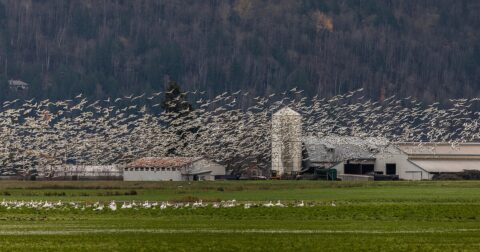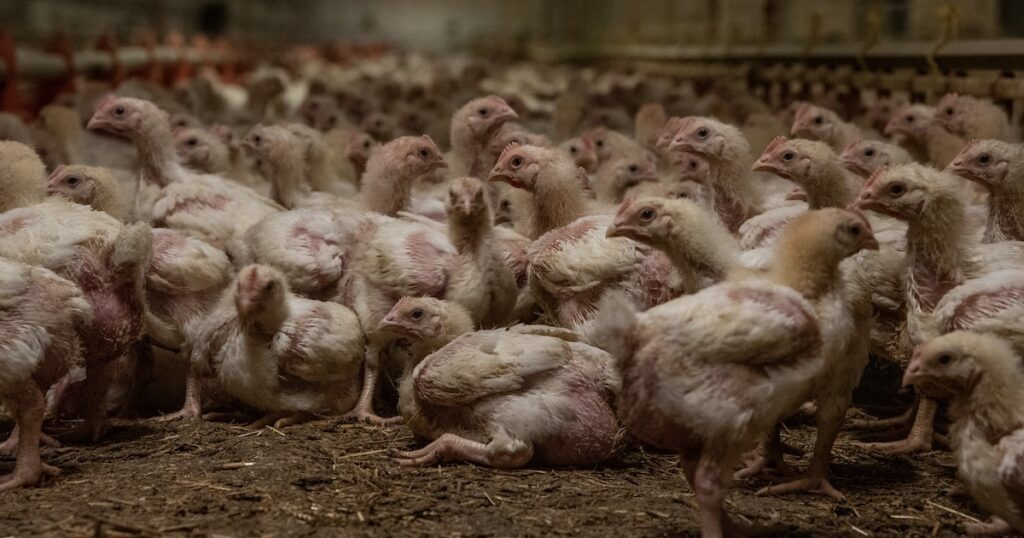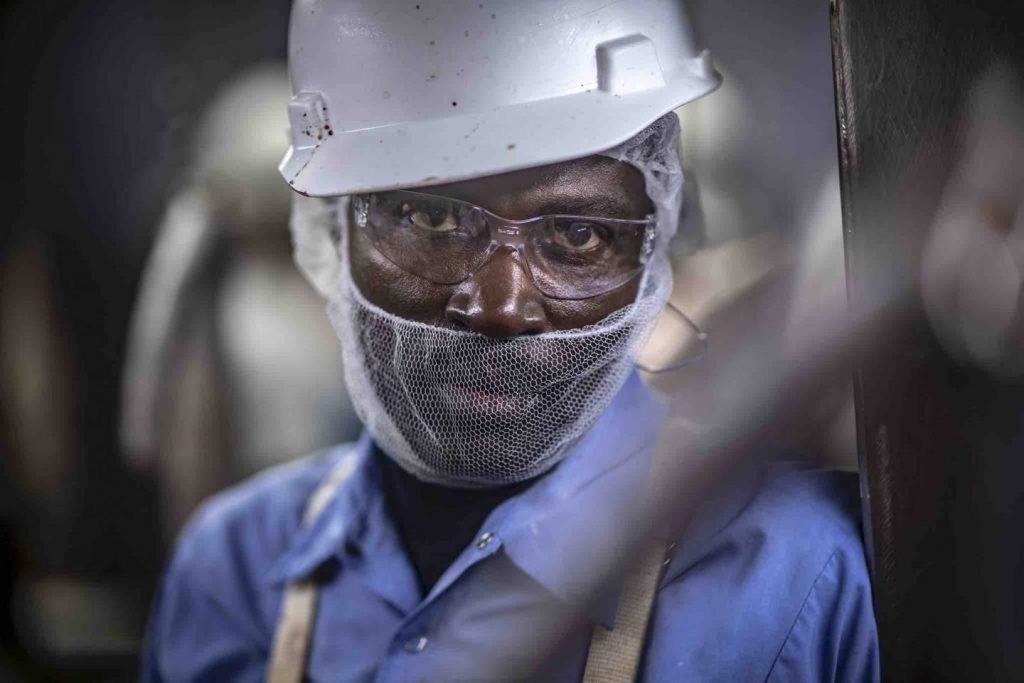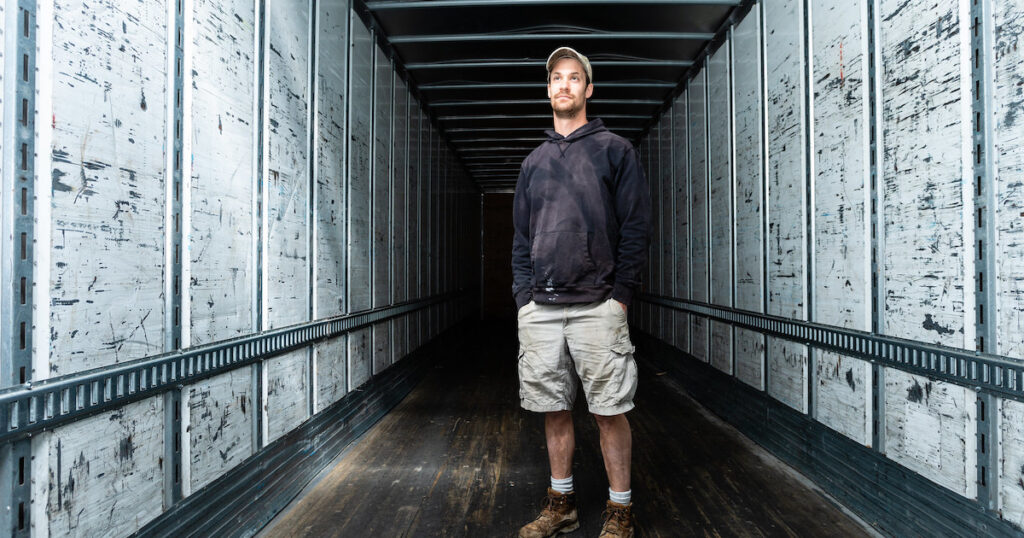Investigation
Oklahoma’s Loophole: How Tyson’s Water Use Goes Unchecked
Food•15 min read
Explainer
And will continue to do so.


Words by Hemi Kim
We’re in the fifth year of a worldwide avian flu outbreak, and there seems to be no end in sight. The standard containment measures haven’t been working, and as a result, egg prices are at record highs, and over a hundred million chickens are dead. But a closer look shows how egg farming helps facilitate the virus’s spread — and how the government’s attempts to stop the bird flu outbreak have fallen short.
“This is historic. We never had anything this big, geographically or species-wise,” Maurice Pitesky, an associate professor and expert in poultry disease modeling at the UC Davis School of Veterinary Medicine, tells Sentient. “This is way beyond [farmers’] skill set.”
The government has stepped in and attempted to end the outbreak through various means, but none have worked. And this is in part because egg farming itself, on a foundational level, is highly conducive to the spread of dangerous pathogens like avian flu.
As of 2022, the latest year for which data is available, there were a little over 168,000 farms in the U.S. that produced poultry products, in whole or in part.
Livestock chickens are generally divided into two categories: broilers, who are raised and slaughtered for meat, and layers, who are raised to lay eggs. At any given point, there are around 389 million layer hens at poultry farms across the U.S., and they produce about 109 billion eggs every year.
In the U.S. alone, farmers slaughter around 9.5 billion chickens every year, including both broilers and layers.
Avian influenza, also known as avian flu or bird flu, is nothing new. It was first discovered in the late 1800s, and there have been a number of high-profile outbreaks since then. In fact, a number of high profile outbreaks happened in 2014.

But the most recent bird flu outbreak has proven much more resilient and deadly than those in the past. It began in 2020, and while previous outbreaks have died off after a few months to a year, this current one is now in its fifth year and showing no signs of letting up. It’s also been spreading to non-avian species, including pigs and cows, as well as people. Backyard chickens and small farms are also far from immune from the virus.
The current strain of avian flu is believed to have originated in wild birds, not animal farms. But there are a number of things about animal farms, and chicken farms specifically, that make them especially susceptible to spreading the disease.
To begin with, the living conditions on poultry farms are almost tailor-made to facilitate the spread of disease. This is especially the case when the chickens are confined in close spaces, as they are on factory farms, but it’s also just an intrinsic fact about chicken husbandry itself. Chickens are highly social creatures who interact regularly with one another, and disease spreads rapidly through flocks even when the animals have a healthy amount of space.
That said, practices common to factory farms make the situation much worse, and not solely because the chickens in them are typically crammed together in tight spaces. The poultry industry has selectively bred chickens in order to maximize egg output, but selective breeding leads to a low level of genetic diversity within flocks. This, in turn, might make the flocks more susceptible to diseases, according to a 2008 study.
The sheer size of factory farms is another exacerbating factor for avian flu: If one chicken gets the disease, everyone else in the flock is also at risk, and when the flock in question has tens of thousands of chickens in it, that’s a whole lot of potentially exposed birds. On smaller farms and backyard farms that follow different practices, the risk is still there. It’s just mostly owing to spread from wild birds rather than these other factors.
One reason this recent outbreak has worried epidemiologists so much is its ability to spread to non-bird species. This aspect, too, is potentially related to chicken farms: Dairy cows are sometimes fed “poultry litter” — a euphemistic name for the mixture of chicken manure, feed, feathers and other organic garbage from poultry farms — and it’s been speculated that this practice may be responsible for spreading the virus to dairy cows, who in turn have been spreading it to people, mostly farm workers.

The federal government authorizes chicken farmers to slaughter their entire flock if even one case of avian flu is detected, and farmers who do this are compensated by the USDA for their losses. These are called indemnity payments, and the USDA has doled out over $1 billion of them so far.
But although the government pays farmers to kill their flocks after detecting H5N1, it has not, until very recently, required farms to implement biosecurity measures in order to receive those payments. For the bulk of the outbreak, farms that experienced outbreaks were required to submit biosecurity plans, but the USDA did not engage its oversight powers to ensure that these plans were actually being implemented. And in December, a USDA report found that the bailouts were inadvertently incentivizing farms not to strengthen their biosecurity measures.
This may be why, according to the USDA, a total of 67 egg farms have been infected with H5N1 more than once, even after culling their flocks and receiving bailout money from the government.
It also may be why the USDA updated its biosecurity policies this year, and is now requiring H5N1-infected farms to pass a visual audit in order to receive any future indemnity payments.
Most of these biosecurity measures concern the structures and policies at the egg farms themselves. But Pitesky says that they should also account for what’s going on near the farms, given that wild waterfowl are one of the main ways the virus spreads to poultry farms in the first place.
“There’s this whole concept of what I call ‘outward facing biosecurity,’ and I don’t think we really do any of that at this point,” Pitesky says. “And that’s really focused on what’s going on within about a four kilometer diameter of your facility.”
The closest to what Pitesky is describing, at least on the governmental level, is the Biden administration’s Wildlife Biosecurity Assessments program, a pilot program in which the USDA sends staff to infected farms to survey the surrounding areas for potential security holes.
The Trump administration recently announced an expansion of this program, but crucially, it only involves a one-time survey of each farm. What’s really needed, according to Pitesky, is ongoing monitoring and surveillance of the surrounding areas, as that’s the only way to account for constantly-changing environmental conditions in the wild.
“The thing that we all have to realize is that the farm doesn’t change location, but the habitat around the farm changes,” Pitesky says. “Until we really understand what’s going on outside the facility, we’re just going to be reactive. We’re going to see which places get affected, and then we’re going to respond. But then a year later, it’s going to be something 50 kilometers to the west or east that gets hit.”
Young animals are taken from their parents, raised in tightly packed spaces, and are denied access to fresh air and the outdoors. For food companies who pay farmers for animals by weight, an animal’s health is less important than whether they are simply alive, at which point they can be used for meat and sold at a profit. As a result, the animals live in unsanitary conditions, pain, loneliness, and poor health. One consequence of poultry breeding is that birds grew too fast for their legs and bodies to support them.
Raising animals for meat directly pollutes the air and water, and degrades land. The environmental impact of companies invested in animal agriculture is most directly experienced by the economically exploited and racially minoritized communities that live near factory farms. Below are some examples of how food companies harm the environment.
Climate change advocates are increasingly aware that meat production is responsible for about one-fifth to 37 percent of greenhouse gas emissions.
Livestock waste and the use of pesticides and fertilizers to produce animal feed contaminate waterways and groundwater. Run-off from factory farming contributes to dead zones in the ocean.
Animal agriculture takes up about 80 percent of all agricultural land in the world and causes various forms of land degradation including the deforestation of the Amazon and poor soil health in areas of heavy pesticide and synthetic fertilizer use.
Whether or not you eat meat, the companies that contract its production at farms are doing so in ways that harm human health—including that of nearby residents, farmworkers, and their families.
“About 80 percent of the antibiotics sold in the United States and half of those sold around the world are used in animals, not humans,” writes Maryn McKenna in “Big Chicken.” Factory farming methods make poor health and disease a constant occurrence among farmed animals: confinement, mutilation without anesthesia, separation from mothers, and harmful breeding practices. Over-reliance on antibiotics in the factory farming industry to meet minimal animal welfare standards has led to antimicrobial resistance (AMR)—the development of superbugs that are resistant to antibiotic drugs.
Residues of this bacteria can also be found in meat at the store, and when animal waste is used as fertilizer, the waste also contains antibiotic drugs and pollutes the local water, soil, and food crops. AMR causes the deaths of 700,000 people per year worldwide and is a massive threat to public health.
As of 2017 antibiotics can no longer be given to animals for non-medical purposes in the U.S., but the practice is still allowed in some other countries, and animals deemed ill can still be administered antibiotics.
Workplace bullying and discrimination based on ethnicity and citizenship status are common, along with a sense that employers care “more about the cows than about workers’ well-being.” These are findings of a 2017 report on immigrant dairy farm workers by worker advocates in New York State. Farmworkers, including dairy and other livestock workers, are excluded from U.S. labor law protections—in another example of the continuing operation of white supremacy. Basic labor rights that farmworker advocates often seek include the right to organize and overtime pay.
As a result, the 2017 report authors explain that dairy farm workers often worked with no rest days, for 12 hours at a time, with very short, five-minute breaks. Most workers felt depressed and confined in substandard, employer-provided housing on the farm.

The same unsafe living conditions of chickens, cows, pigs, and other animals in farms also threaten the health of workers who are charged with handling the animals. Breathing in the dust and gases from factory farming leads to respiratory problems, something most workers at pig farms experience, per the Food Empowerment Project. Animal farm workers who are chronically exposed to hydrogen sulfide, a gas that arises from liquid manure, can experience skin and eye irritation. The amount of liquid manure itself can be a hazard. Workers have died from asphyxiation as a result of the release of hydrogen sulfide.
Workplace hazards in animal agriculture also include needle pricks, animal-to-human infections, extremely cold or hot weather, and physical injuries.
Farmer-owners in the meat industry—particularly chicken and pig farmers—are often unable to escape debts from disadvantageous contracts with food companies. They regularly only have one buyer with which to negotiate prices. As a result, most farmers lose money on their operations or make unstable, poverty-level incomes, requiring them to find additional work elsewhere to supplement their farm income.

Diseased or otherwise unwanted animals are regularly killed on farms. Some methods of killing chickens and other livestock are grinding, gassing, and snapping their necks.
In the “ideal” factory farming scenario, animals are raised on farms and taken, while still alive, to another site to be slaughtered and “processed.” However, animals do die while living in captivity, whether because of inadequate treatment for disease, poor-quality feed, or ailments related to their selective breeding for factory farming.
While there is no official count of concentrated animal feeding operations in the U.S., the 2017 Census Ag Atlas Maps indicate that beef cow farms were concentrated in a corridor running from Texas to North Dakota. Milk cows were mostly in California, Idaho, Wisconsin, Pennsylvania, and New York. Pigs were concentrated in Iowa and North Carolina. Chickens were mostly in the Southeastern and Mid-Atlantic states.
China and the U.S. are the countries producing the most meat in the world, according to Our World in Data.
Technically, factory farming is legal. However, the laws governing animal agriculture and related food companies are not well-enforced. For example, the Packards and Stockyards Act of 1921 was enacted to protect farmers from food companies dictating how farmed animals are to be raised. Yet it has been watered down, advocates say. Meat industrialists have used legal means to weaken animal welfare standards and to establish their political and economic dominance over consumers, communities, animals, workers, and farmers.
Meat-eating is both a longstanding phenomenon and one that has been transformed and given a new scale in an industrialized world. One reason animal agriculture continues is because eating meat is a deeply embedded cultural norm for many people, and hard to change. In their book “Aphro-ism,” theorists Aph and Syl Ko also describe how the modern ways of separating human and animal developed alongside ideas of racial hierarchy, and posit that the norm of seeing nonhuman animals as lesser beings is deeply entwined with a white supremacist worldview.
The most basic alternative to animal agriculture is agriculture without animals. Rather than eating meat, consumers can look for plant-based options. Human deaths around the world could be prevented by 6 to 10 percent, researchers say, if people reduced their meat intake. Even switching to a partially meat-free diet could significantly reduce greenhouse gas emissions.
With regard to farmworkers, advocates in the dairy industry point out that states can provide basic labor protections, extend driver’s licenses to undocumented immigrants, and “be more informed about agricultural production. This is hard work and it is mostly Latinos doing it.” Most dairy farmworkers are undocumented Latino immigrants.

Finally, finding an alternative to factory farming, and the factors that maintain it within the food industry, may require more than eliminating meat and addressing workers’ rights. It means shifting the balance of power towards equity in food systems on every level and in each sector of the supply chain. For starters, Soul Fire Farm’s policy platform suggests concrete ways for how individuals and organizations can fight for a more just food system: for farmers and farmworkers, for Black, Latinx, and Indigenous people, and for schools and communities.
Through factory farming methods, people can eat low-cost fish, chicken, beef, pork, and other animal-based foods, but at the expense of the environment, animal welfare, and marginalized peoples. It is possible to change the way we get our food. By reducing the consumption of meat, and valuing workers, people of color, communities who live near farms, and the general public, humans can better care for the earth and its inhabitants.